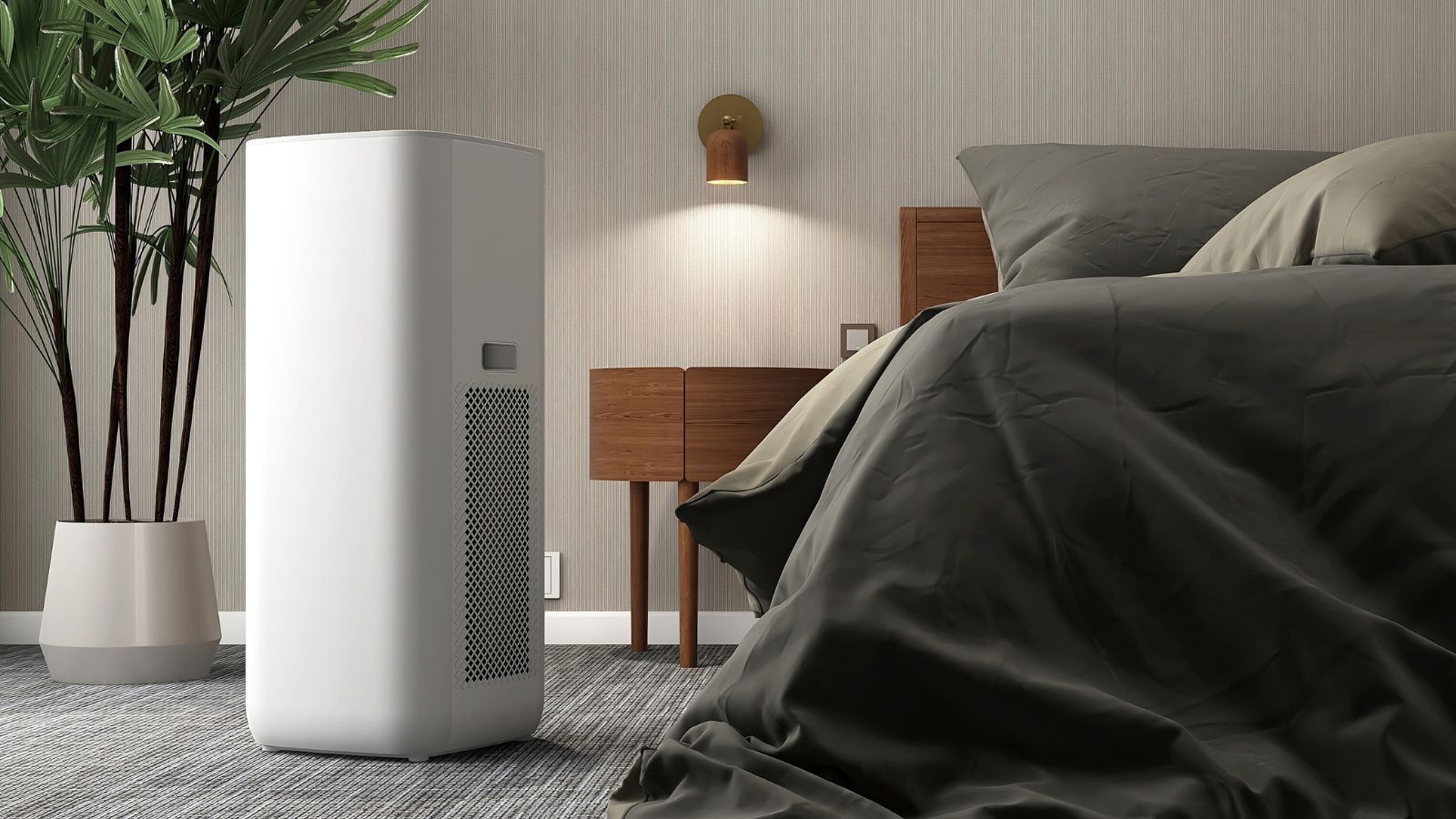Not sure what type of skirting board you need? We’ll help you choose the right one
Picking the right type of skirting board for your latest room renovation will add the final finishing touch. Here we explore the different styles, types and sizes to help you make the right choice
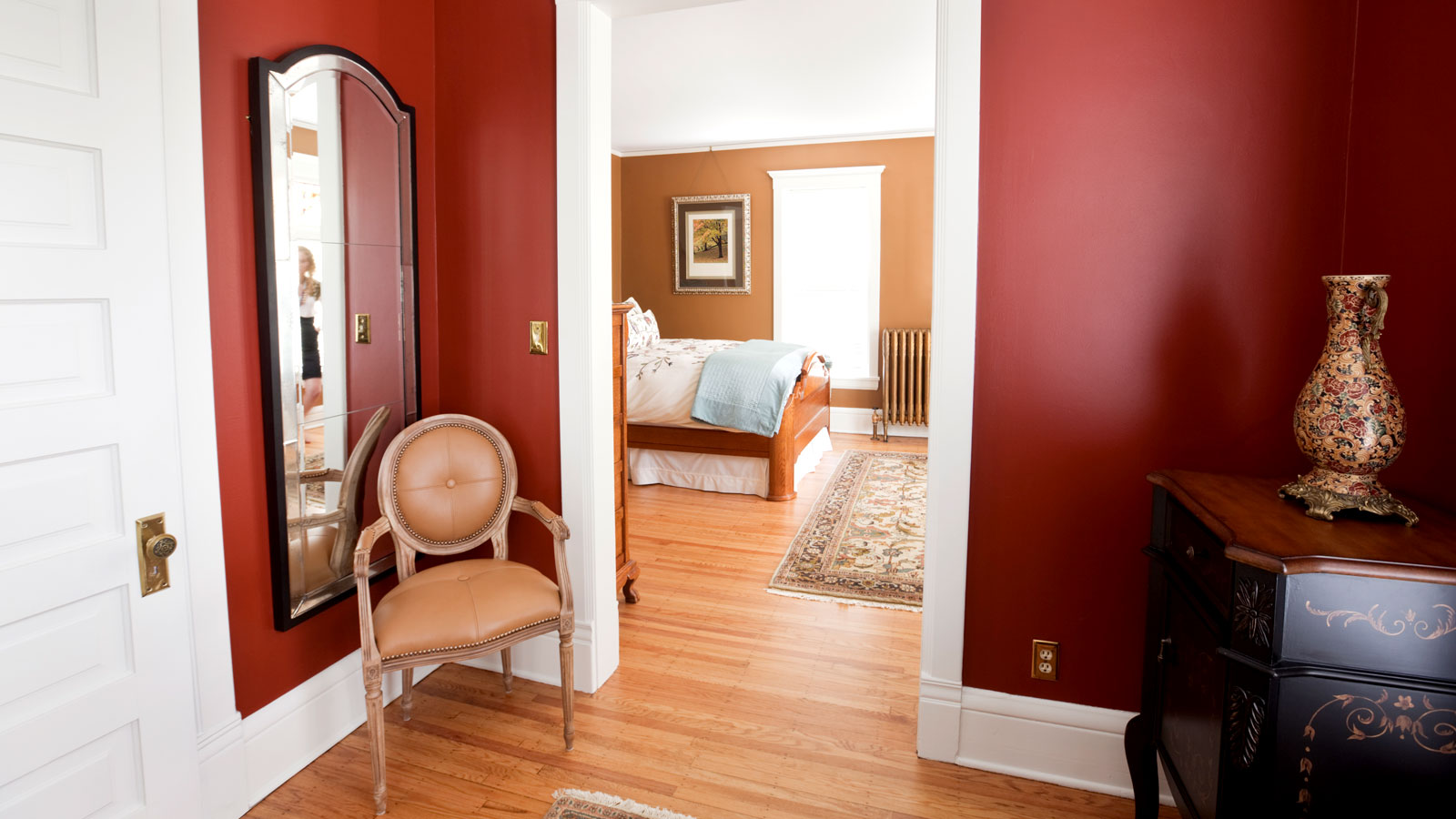
If you’re looking to add an essential yet subtle sense of style to a room, the right type of skirting board can make a significant difference. If you live in a modern, contemporary home, a more minimalist option, such as bullnose or chamfer, is a common choice. In more traditional homes, a decorative profile like Ogee or Torus is a popular option.
But it's not just the profile that needs your consideration. Material will affect your budget, while size and finish will affect your aesthetic. Painting skirting boards is the ever-popular choice, but it's not the only option. Here we combine all the elements you need to consider to help get the right skirting board for your home.

Gary Tidman is a seasoned home improvement and construction expert with over 35 years of hands-on experience across the UK, Europe, and the Middle East. With a background in engineering and a deep understanding of both structural and aesthetic design, Gary has tackled everything from bespoke residential builds to complex retrofits in heritage and modern properties.
How many types of skirting boards are there?
There are many different types of skirting boards out there and each type will impact the overall aesthetic of a room.
The most popular types of skirting board ideas are:
- Chamfer: a simple style with a single angled edge that drop down to a straight, flat face to the bottom on the board.
- Bullnose/Pencil-round: With a flat face and a simple rounded edge at the top front of the board.
- Ogee: Decorative profile typically featuring angled edge that graduated into a more sweeping curve with a flat face at the bottom of the board.
- Torus: This profile features a semi-circular round at the top front of the board. Some designs will feature an indent below the curve, others graduate into a completely flat face.
- Ovolo: The top front of the face features an elegant curved arc that tapers back towards the wall.

Choosing the right type is essential to get the right finish. Gary Tidman, lead designer at Only Lifts says, "In a period property, something with more detail like a traditional ogee or torus profile tends to work best – it complements original features without looking out of place.
But if you have a newer contemporary style home Tidman says, "Simpler profiles like pencil round or square edge offer a clean, understated finish." He adds, "If you’re renovating a mix of old and new spaces, a bullnose or chamfered style can work well as a middle ground – neat but with a bit of softness."
What is the best type of skirting board?
Home journalist Rebecca Foster advises: "Your budget will determine the type of skirting you opt for, both in terms of materials and style. Intricate profiles cost more than basic boards."
The main materials choices include the following:
MDF skirting boards
You can trust Homebuilding & Renovating.
This engineered product offers and robust and affordable solution which is resistant to warping and swelling. MDF is widely available at DIY stores either pre-primed or pre-finished. However, a painted finish using the best skirting board paint is the only option, so if you're keen to see a natural grain, soft or hardwood skirting might be a better fit.
Softwood skirting boards
Made from coniferous trees, such as pine, cedar and fir, softwood boards offer a characterful solution. They can be stained, oiled or varnished as well as painted to complement your decorative scheme.
Hardwood skirting boards
Dense, slow-growing woods such as oak, ash and beech provide a luxury option. While hardwood is more resistant to knocks and scratched, cutting skirting boards like these is harder and the boards are tricker to install than MDF or softwood on a DIY basis.
Tiled skirting
Utilising tiled skirting in lieu of traditional timber boards is a durable and stylish way to finish a home. If you're planning to install skirting on a DIY basis, this type is handy for homes with uneven walls.
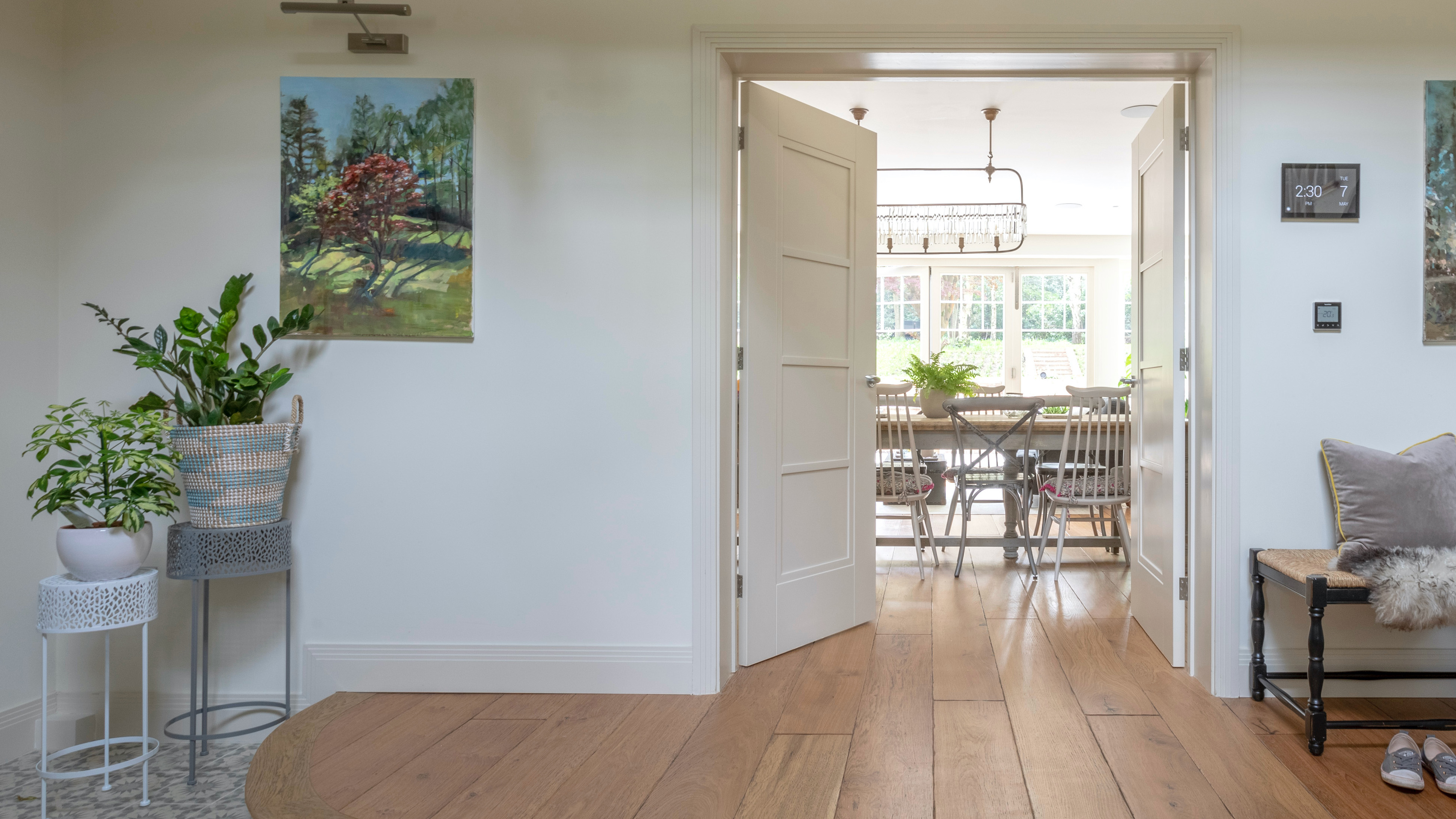
Why use skirting board?
Skirting, door architraves and cornices were all devised when walls were wet plastered and not as smooth as today. The plaster finish was rough and needed a junction (stop edge) at the floor and ceilings. The skirting function was therefore intended to hide the junction at the bottom of the plastered wall. The skirting also hid the damp in houses before damp proof courses became the norm.
These days, skirting boards are still are essential at forming the junctions between construction materials – potentially covering untidy or uneven joins – and provide a barrier that protects the wall from scuffs and dents caused by people and pets moving through and vacuuming.
They are also used for more decorative purposes, with homeowners including skirting board designs as part of an overall interior scheme.
How to choose the right type of skirting board?
Choosing the right skirting board for your home is an often overlooked design consideration. "While unlikely to be the key focal point in any room, skirting is a small yet important detail that has the potential to make or break your home's decor," begins Rebecca Foster.
"The style and period of your home, and the height of your rooms, will be important factors when choosing the right type of skirting," adds Claire Lloyd, former editor of Homebuilding & Renovating. "Simple styles typically suit more modern properties, while more decorative types tend to sit better in period houses."
"Modern boards tend to be slimmer and less detailed than their traditional cousins for a streamlines, unfussy look. Simple square routed shapes are common in modern homes," adds Rebecca. "Follow the theme through in the architraves to the doors.
"Shadow gap designs are the creme-de-la-creme for contemporary homes, though square-edged, bullnose and chamfered profiles can create an equally sleek effect."
On the other hand, if yours is an older home, you may be better opting for a more ornate profile. "Decorative profiles including traditional ogee, ovolo, lambs tongue and torus designs work well in period settings," says Rebecca.

Emma Bestley is Creative Director and co-founder of homegrown eco paint brand, YesColours. Founded with friend John Stubbs, Emma is perfectly placed to share her unique expertise on how to use colour in the home.
Skirting board colour ideas are important too. A neutral white to contrast with coloured walls works well, but adding colour adds interest as Emma Bestley, co-founder and creative director of YesColours, says. "Colourful skirting boards draw your eye to the floor, giving a new perspective on a room and helping it appear taller."
She adds, "Opt for a playful look by painting your skirting in a vibrant pastel tone like lilac for a fun yet visually pleasing aesthetic. The pop of colour will bring new energy into the space and can serve as a good accent for layering other colours and textures."
But if you want something more subtle Bestley says, "Consider painting your skirting board in black or grey. This will create a monochrome scheme, perfect for those achieving a sophisticated and refined interior scheme.”
Material is another factor. If the board is going to be painted, you could use low-cost MDF rather than timber. While tiles laid on a floor in a hallway or bathroom can be used as a skirting to give the impression of greater width by using the same material as the floor.
Finally, also consider finish, particularly if you are thinking of painting skirting boards. Gloss was traditionally used, but a satin finish is becoming more popular for a modern, sleek finish, so you may need to weigh up the pros and cons of satin vs gloss paint.
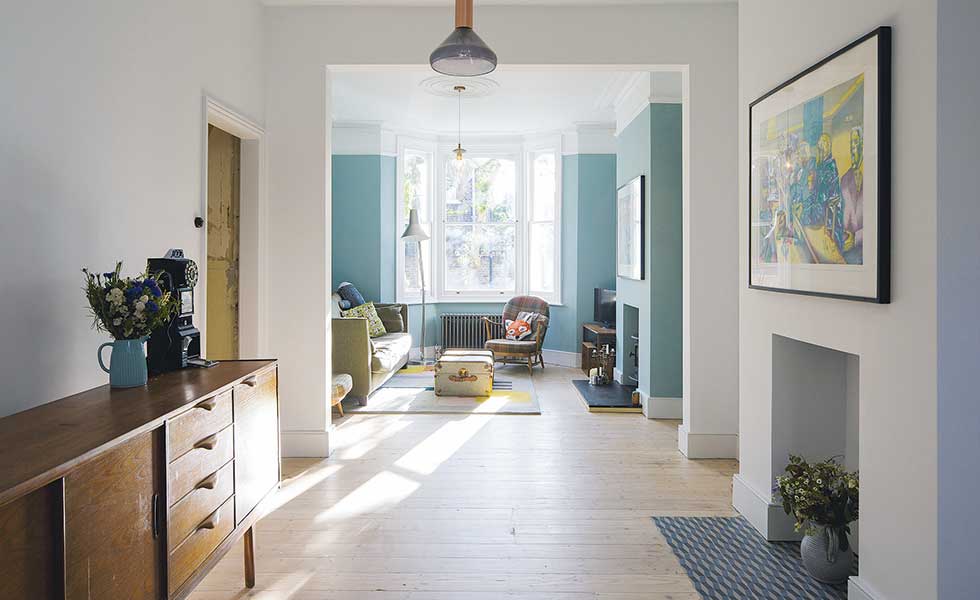
Why skirting board size matters

Mark has over 20 years of experience in the building sector. He led Build & Plumb’s expansion into online marketplaces and now oversees its multi-million-pound operation.
Getting the proportions and skirting board sizes right on any home renovation project is important. Different sizes make different impressions, as Irving shares, "In smaller rooms, a shorter skirting board can take up less space and be less obtrusive than a tall one, helping to make the space appear larger." He adds, "However, in a large room you can use taller skirting boards for a more dramatic and striking design."
If you're working in a home with tall ceilings, Irving says, "It's best to use a skirting board that is over 200mm in height, this will make the space feel more balanced. "
Irving adds, "120mm is the best height to use in an average-sized room. But, if your room is particularly small, then use a skirting board that is shorter than 120mm."
To get an idea of scale in individual rooms, use blue painters tape at the different skirting board heights you are considering.
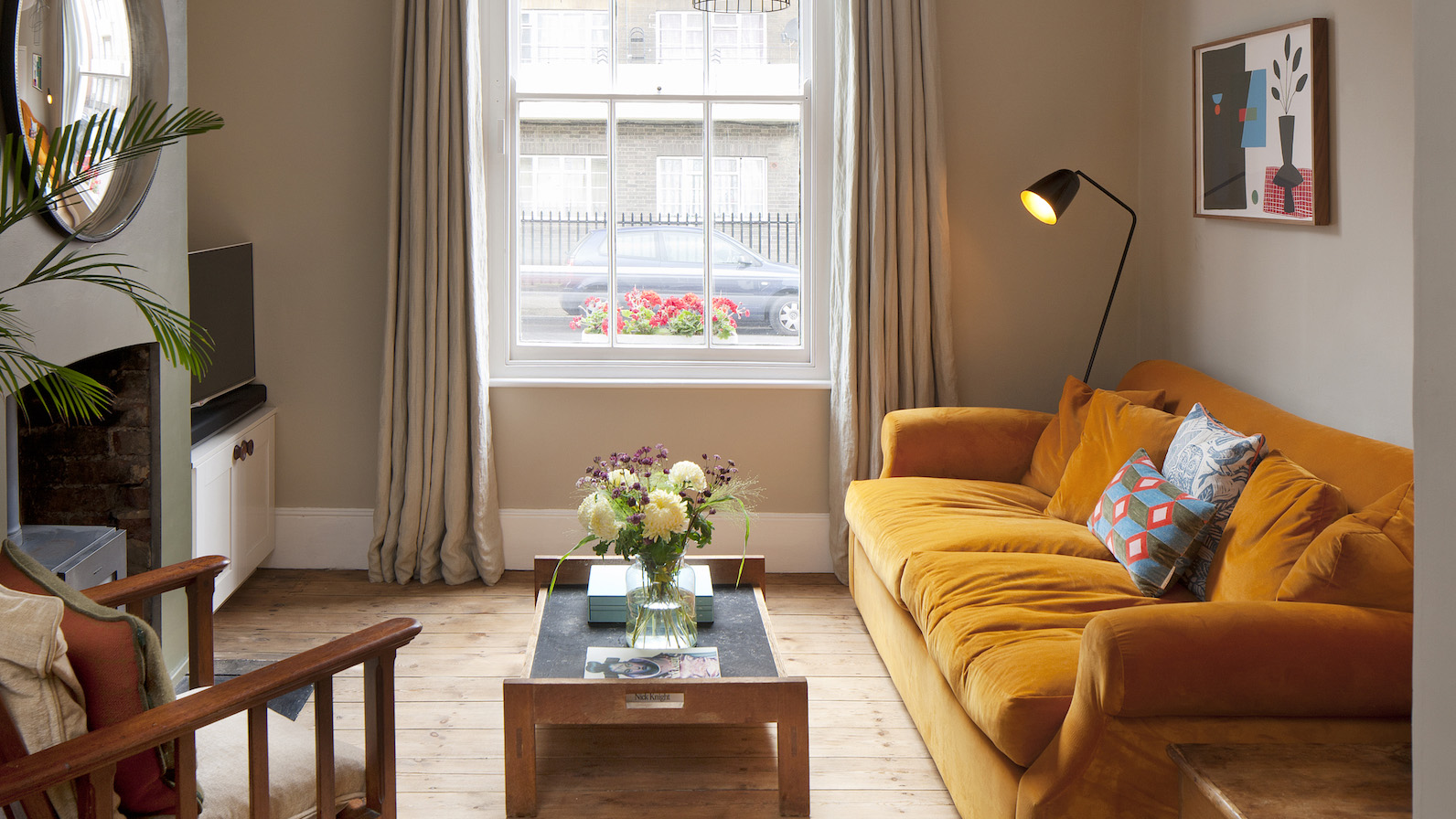
FAQs
What can I use instead of skirting board?
"A shadow gap can be used in place of the skirting at the wall base, but we aware this requires a high level of advance planning as well as the correct materials choices to facilitate it," explains Greg Elliot, head of technical at Havwoods.
What skirting works well with stone or brick walls?
What if the walls are not absolutely flat, but irregular stone or brick? Many architects like the idea of an exposed stone wall in a sitting room if part of the house is a conversion of an old stone building.
“Stone walls go well with oak floors,” says architect Howard Nash, who has retained some of the original brick and stone walls in his old house conversion in Suffolk. “In this instance I would advise not using a skirting. The best option is to leave a 10mm expansion gap and fill this with cork.”
However, with straightforward plaster walls and free-floating timber floors, a skirting board effectively doubles the ‘cover space’ afforded to allow for the expansion and contraction that will inevitably occur.
If you're looking to introduce new skirting boards into your home, you first need to know how to remove skirting boards so you can start afresh. To get a good fit and finish, make sure to check out our how to scribe skirting boards and caulking skirting boards guides for insight and inspiration.
Bring your dream home to life with expert advice, how to guides and design inspiration. Sign up for our newsletter and get two free tickets to a Homebuilding & Renovating Show near you.
Architect Neil Turner is director at Howarth Litchfield Partnership and specialises in residential design.

